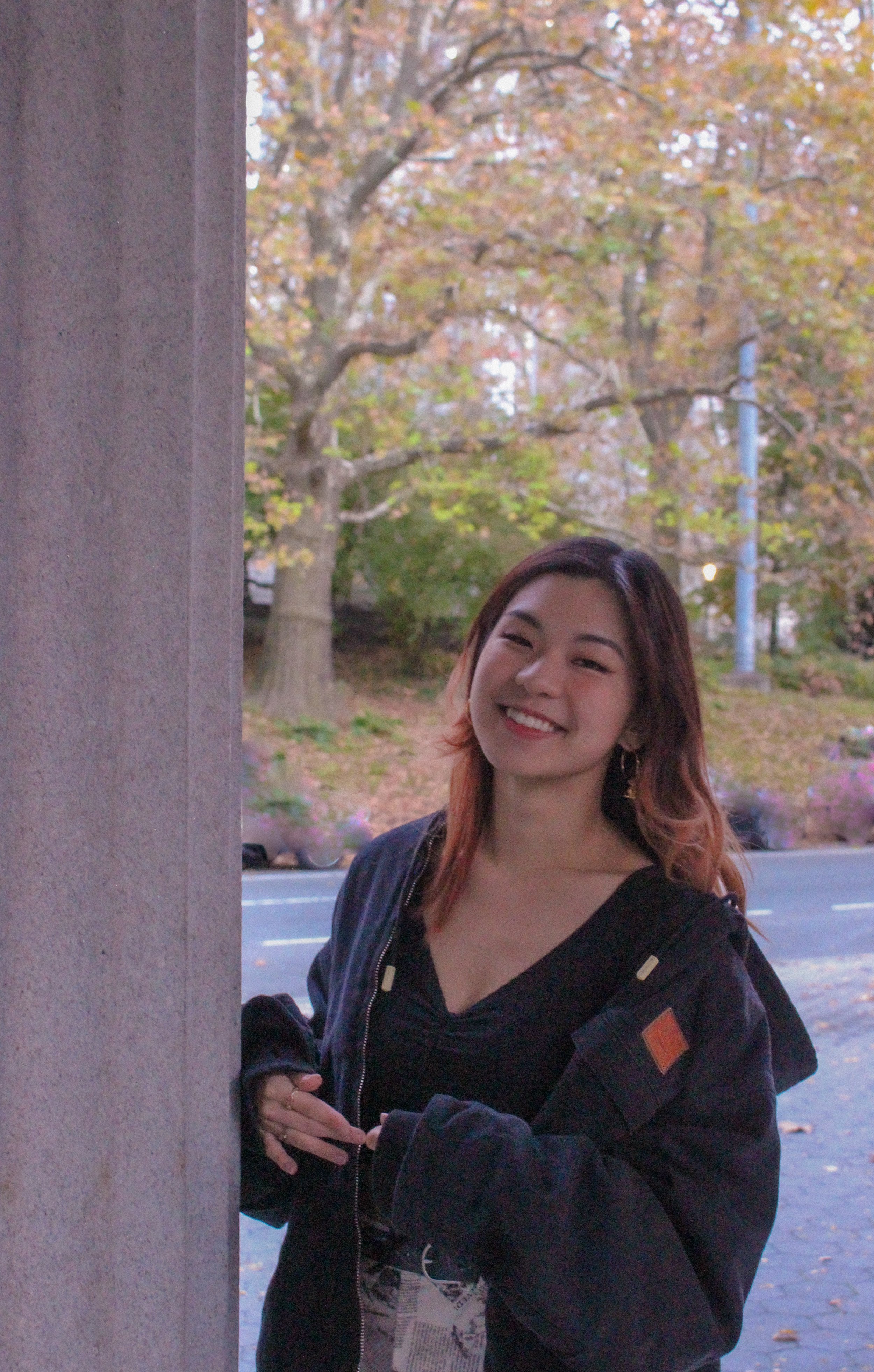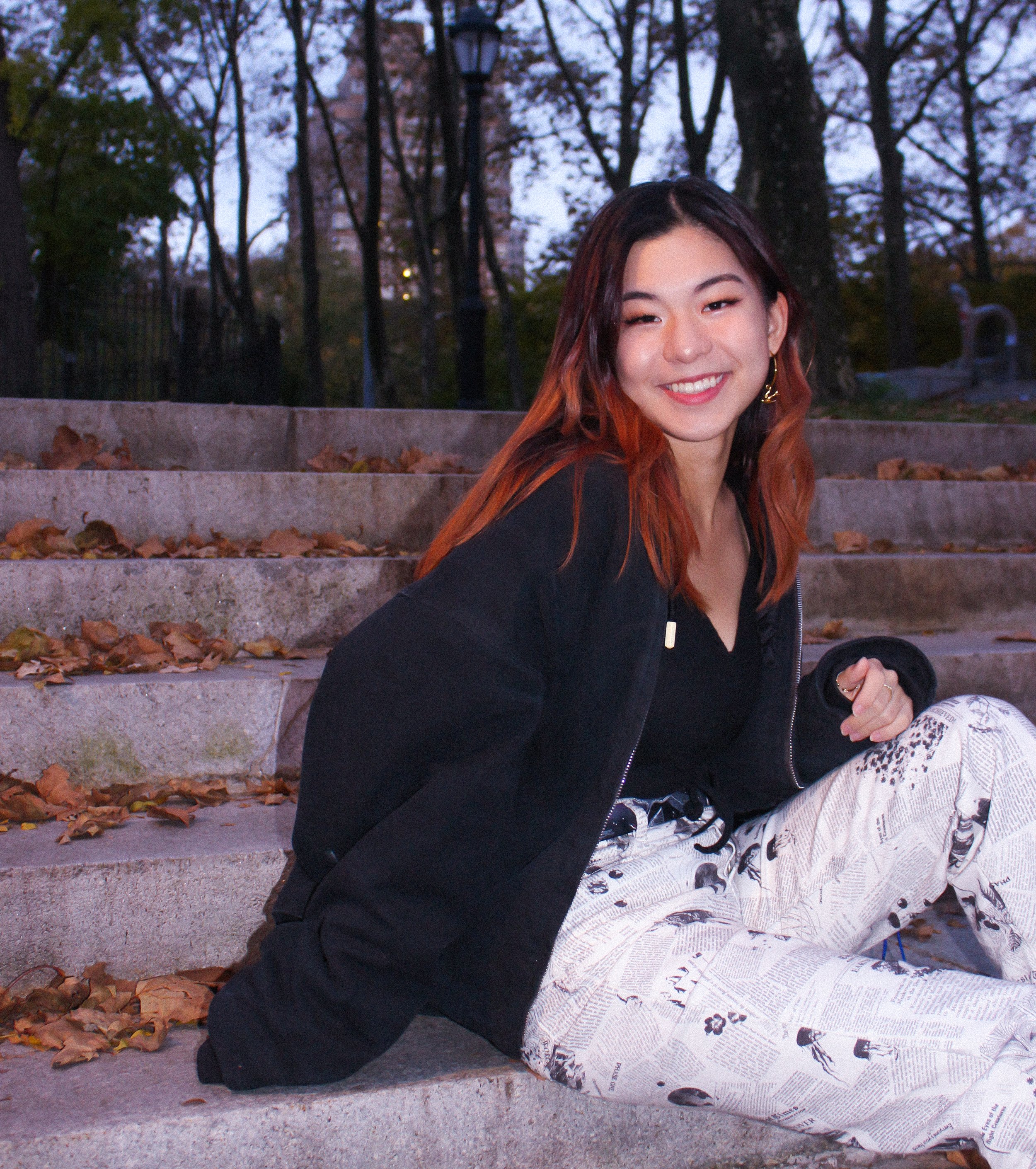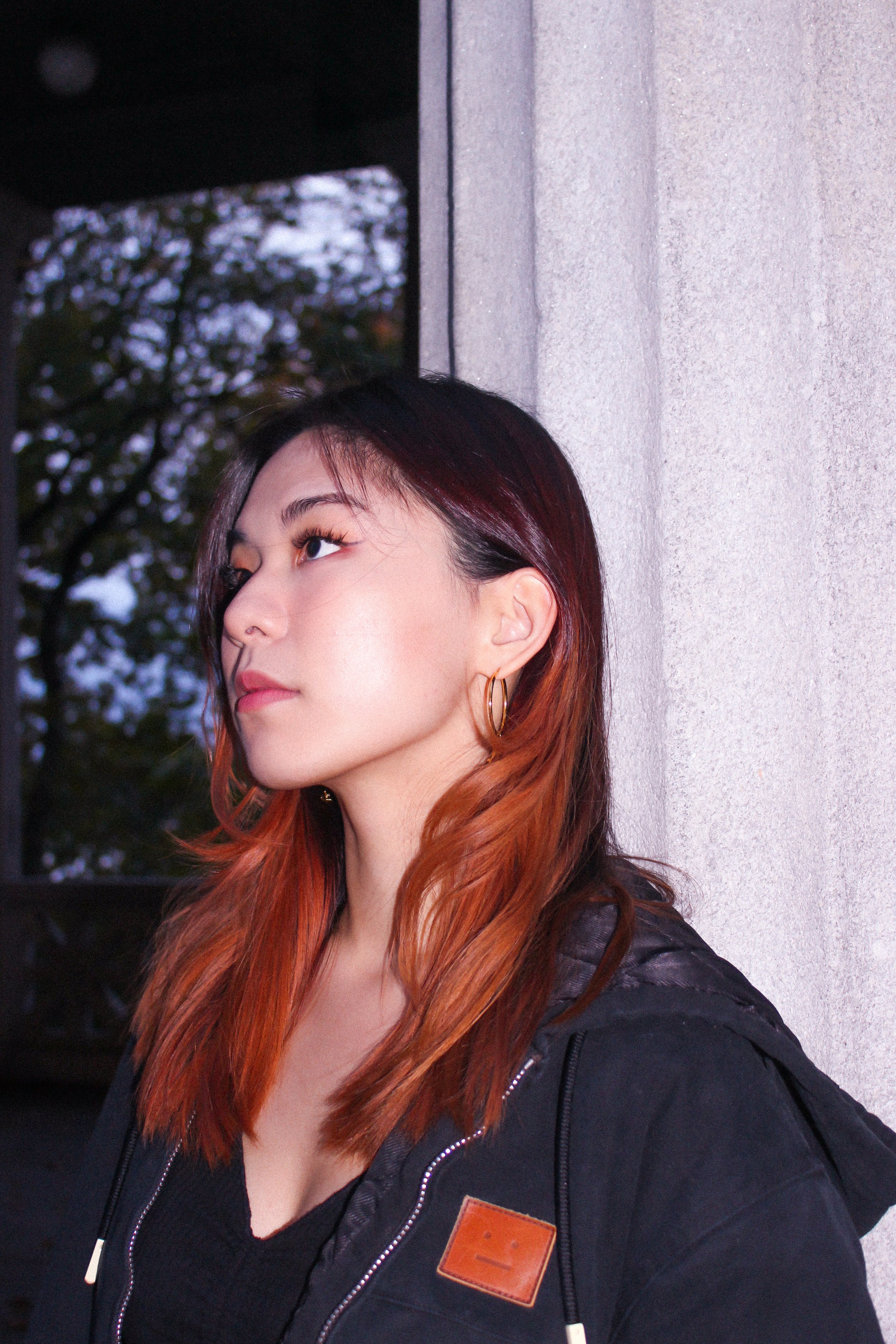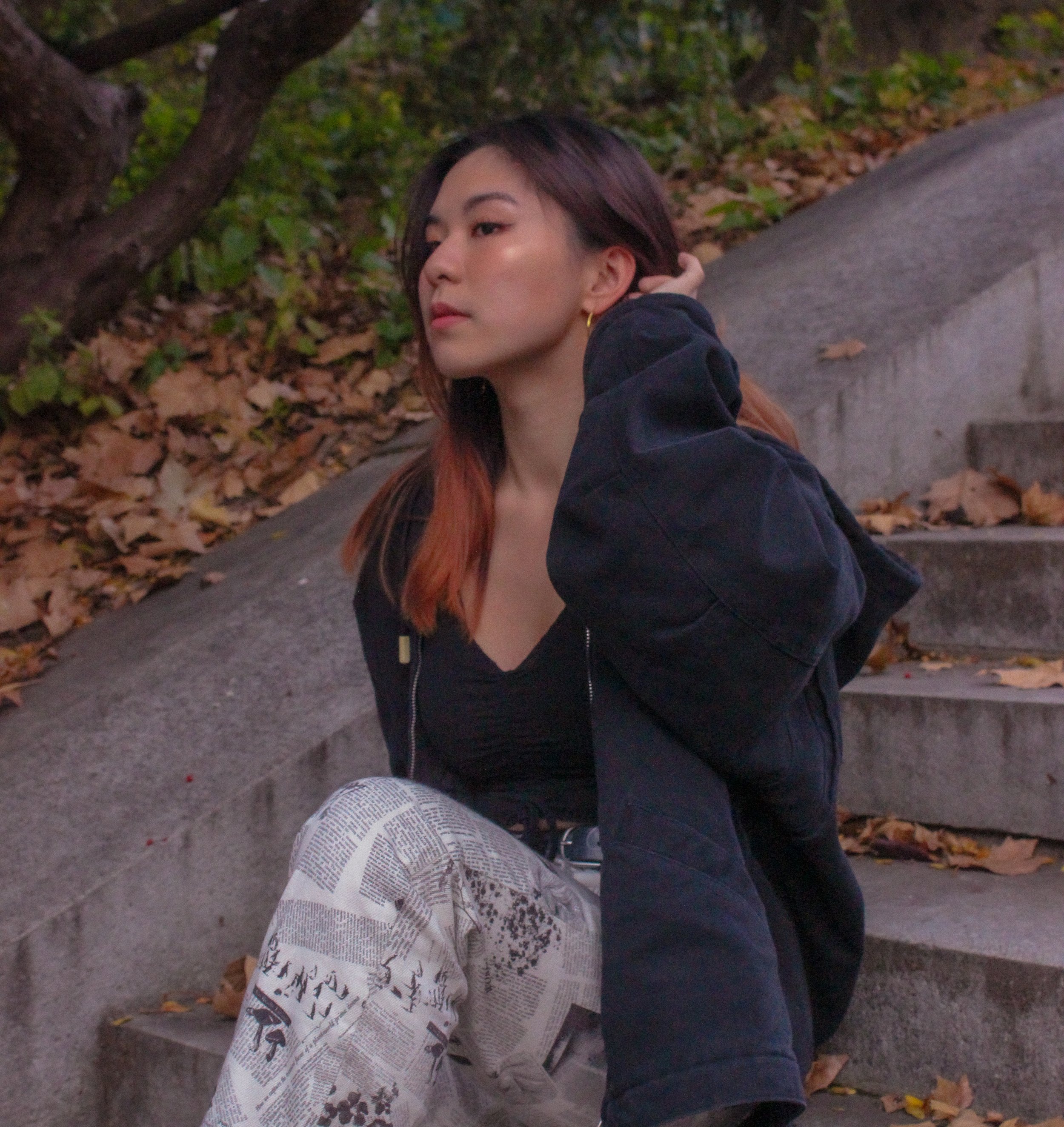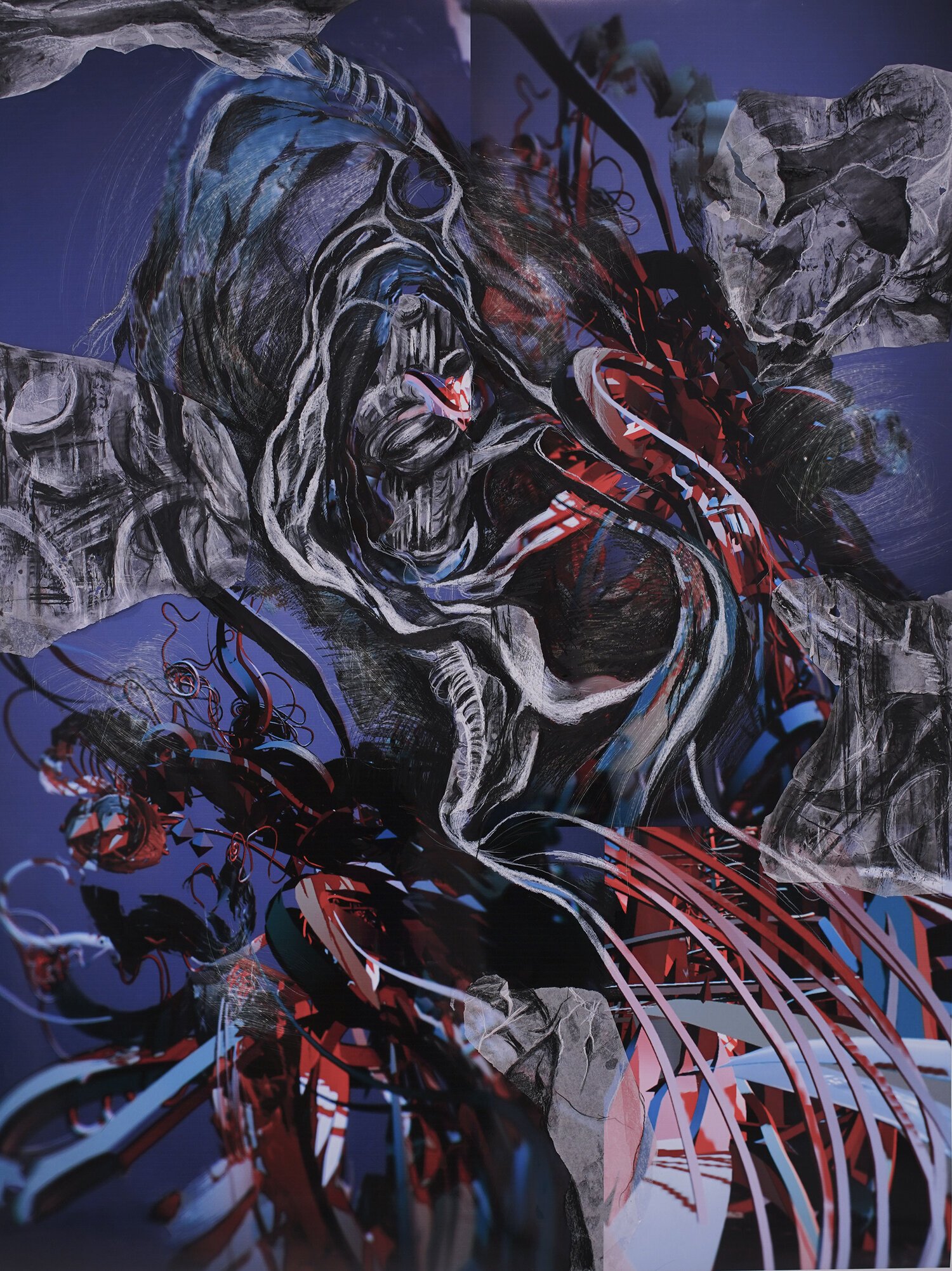Feature by Justin Liang
Photos by Georgia Dillane
The first thing Christina Su will tell you about herself is that she is Canadian. “I don't shut up about it,” she says. “Vancouver, where I’m from, has the best Chinese food outside of China.” At first, this bit of boosterism does not strike me as significant: mere banter at the start of our two-hour conversation about her art and career as an artist.
Yet only as our conversation continues does it become clear how important identity and place are in her oeuvre. Take, for example, one of the first works of hers she shows me: a striking piece called In Perspective (spray paint and gouache on paper), which depicts a narrow alleyway whose proportions and signage recall the backstreet lanes of a Chinese metropolis. Yet, the scene is clearly not of this world. Textureless and depopulated; monochromatic save for the vivid pop of a few red lanterns: this is a strange parallel reality that is at once both spectral and lonely.
In Perspective
Then a projector flickers on, and suddenly a riot of ghostly, mythical figures are superimposed upon this urban dreamscape: a giant cat looms mysteriously in the distance, while witchlike wraiths wander the alleyway. It is an immersive, haunting work, revealing influences as diverse as Blade Runner and Studio Ghibli while displaying originality of its own.
The immersion in an environment and a strong sense of place that characterize In Perspective is a consistent theme in Christina’s oeuvre. She points to her experience of Gaudi’s buildings in Barcelona as a key influence: “if I were an architect I wish the world would let me be Gaudi… how he creates space in a way that collects light, seeing what someone could do in the relatively rigid medium [of architecture] was really inspiring”.
Immersion in a compelling environment is not just a visual experience: it is also, she says, a meditative one. Exterior space can inspire interior states of mind. Though Christina says In Perspective has been called dreamlike, it remains rooted in a recognizable urban space that obeys the laws of perspective. She shows me another piece, however, that leans more heavily away from realism into the realm of psychological abstraction.
Iceberg of Consciousness
This piece, entitled Iceberg of Consciousness, has its inspiration in the psychoanalytic theory of Sigmund Freud, says Christina. The tip of the iceberg shows a jumble of more recognizable objects and figures, though their sense of scale is heavily distorted: two girls, for instance, sit atop a boba drink and soda can. This figurative world, she says, is the conscious mind. Further down, the work devolves into ever higher levels of abstraction, with disembodied hands floating along torrents of pure color, representing a push “deeper into the subconscious.”
The mapping of psychological states onto physical space is taken into three dimensions with Grasp, a Chinese lantern made of bristol board and painted with gouache. On the outside, billowing clouds swirl around a face looking out towards the viewer. Christina interprets this figure as falling into the lantern, away from the viewer, but the hand outstretched suggests an opposing directionality. Various cutaways reveal the illumination within, which changes color thanks to an electronically programmed light bulb. The effect is ethereal, almost mystical.
Grasp invites immersion in physical space: the interiority of the lantern, viewable only from close quarters and at particular angles, draws the curious viewer nearer. Up close, what comes into view is a profusion of Chinese characters. Christina explains that these are fragments of song, poetry, and literature that she was inspired by in her childhood. This one, for example, is the opening line in the Romance of the Three Kingdoms, a classic 14th-century historical novel of which Christina read a children’s version in her youth.
Chinese culture and heritage play an important role in Christina’s oeuvre, attesting to her unique upbringing in Vancouver’s Chinese diaspora community. She recalls spending countless hours in front of the television set with her grandmother, watching Chinese medieval dramas. “I would pretty much just sit at home with [her] and watch whatever she was watching.” As her grandmother explained the myths and legends behind them, she began to read more deeply into Chinese history and literature, whose rich material was fuel for her budding imagination. “I started picking up drawing as a means of visualizing what was going on in my head… I would just sketch whatever character was in my bedtime stories,” she explains. Her visual panache caught the attention of her parents, who empowered her to dive more deeply into the arts.
In a crucial sense, then, culture and heritage form the bedrock of her creative career. The rich realm of Chinese myth and legend gave her the imaginative license to envision other worlds, parallel universes that are both familiar and strange to us, disturbing our rooted, taken-for-granted sense of reality. In the martial arts canon, for instance, heroes float and villains fly because the laws of physics are suspended. A different kind of suspension applies in the realm of metaphysics, where utopian visions and codes of conduct in Chinese literature provide new material for pondering questions of ethics and morality.
This push to imagine new worlds, and to immerse us in them, drives Christina’s creative output. Whether it’s the urban spirit realm of In Perspective or the psychedelic, culturally inflected dreamscape of Grasp, Christina invites us into the parallel universes of her imagination. It is no coincidence, then, that she has extended her practice into the realm of virtual reality (it is for this same reason that she has eschewed sculpture, with its greater number of physical constraints). Her virtual reality portfolio, created using Google Tilt Brush, steers away from the cultural referents of her two-dimensional work into pure, abstracted feeling; it retains, however, the same mysticism, sense of disorientation, and psychologically probing, dreamlike quality of her earlier oeuvre.
Virtual Reality: Explorations in Google Tilt Brush
These features of her art are all enhanced when donning a virtual reality headset and feeling surrounded on all sides by the world that Christina has envisioned. The power of technology to facilitate new forms of immersion has motivated Christina to add a computer science major in addition to visual arts. She is inspired, for instance, by such generative art practices as training artificial intelligence to mimic one’s own drawing patterns, which enable collaborative pieces between humans and robots. “Everyone has a grounded idea of what reality is, but to re-explore this reality through something a lot further out there is interesting.”
The demands of technology, however, can also impinge on creative practice. As a time-pressed Columbia creative, Christina strives to carve out the time to simply stop and think: “shower thoughts,” she says, are a crucial part of her creative practice, because only with time and leisure can her imagination unfold and inspiration strike. Her artistic process begins with capturing the contents of her imagination in a “word vomit” on the page: the ideation process is the most time-intensive stage of her creative journey, she says, whereas the actual execution goes relatively quickly.
Urban Utopia (2020)
Aside from exploring the world of virtual reality, Christina has also indicated an interest in combining sound with visuals. She “can’t walk into a cathedral without instinctively hearing organ music”, and has gestured to the possibility of collaborating with a composer on a soundtrack for her virtual worlds: all in the interest of even greater immersion. Game design, with its emphasis on creating immersive, engaging game worlds, is another area of possibility. The culture at Columbia has, she says wistfully, also pushed her thinking in more corporate directions: she has spent time applying her artistic sensibilities to user interface and user experience design for smartphone applications, though even these she hopes to imbue with her own creative sensibilities. “If you take creativity and visuals away from me it just wouldn’t work out,” she says of her future.
Christina, for all of her prolificity, is just getting started, and there is much to look forward to. Whether continuing to mine the rich seams of her culture and heritage or to build worlds of purer psychological abstraction, her work is certain to remain rooted in the immersive environments and strong sense of place with which she grew up. In some senses, she’s come far from her childhood in Vancouver, but in the best of ways, she hasn’t strayed far at all.
The entirety of Christina’s work can be found on her website, https://www.christinasu.com/ and Instagram @artchrissu.
































